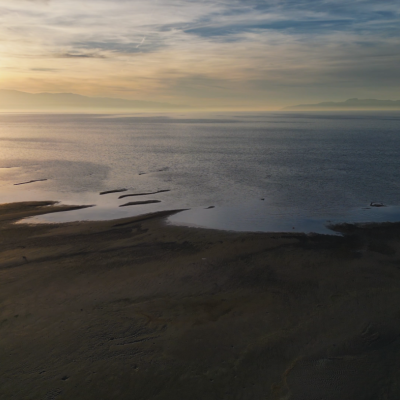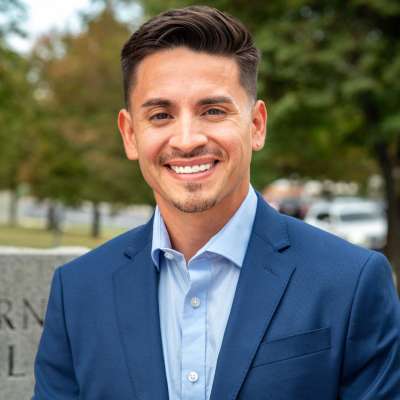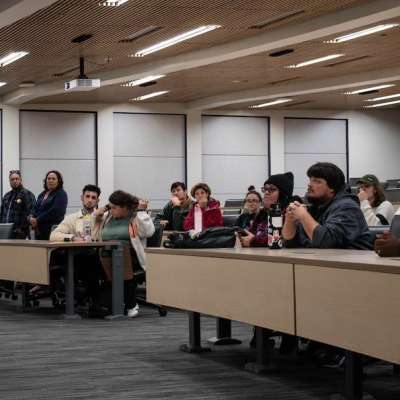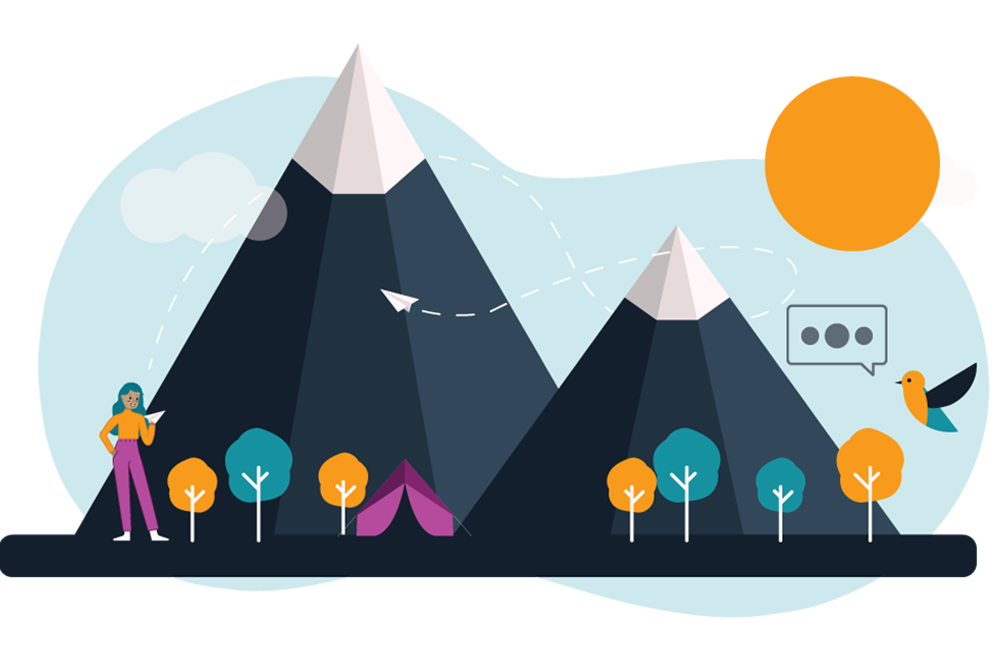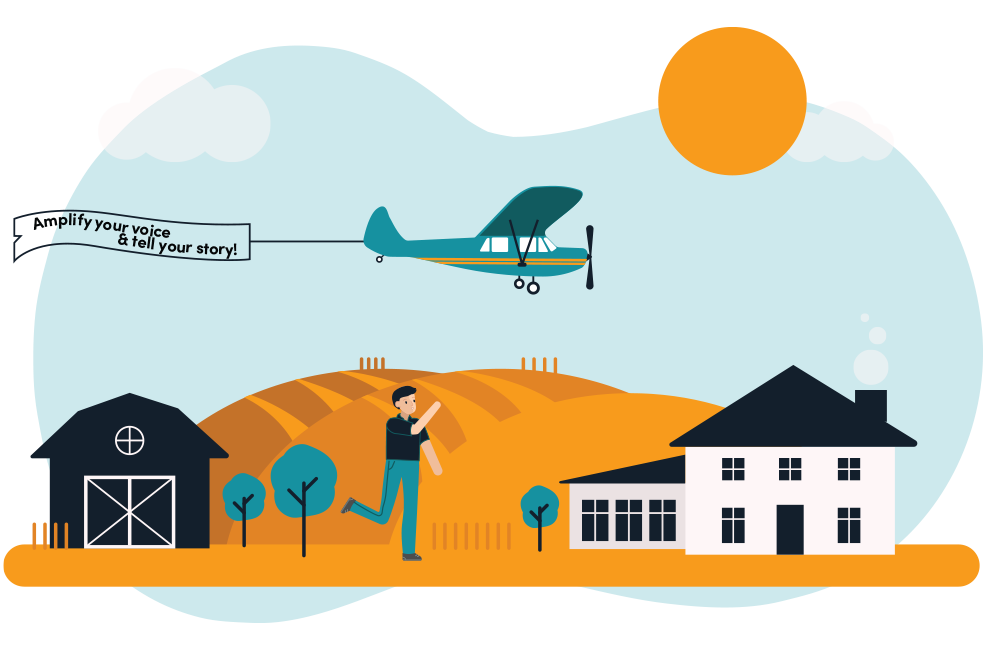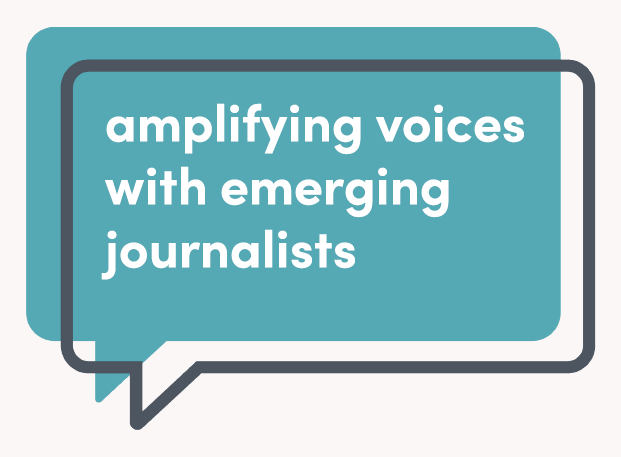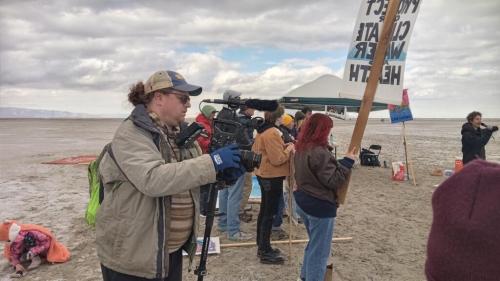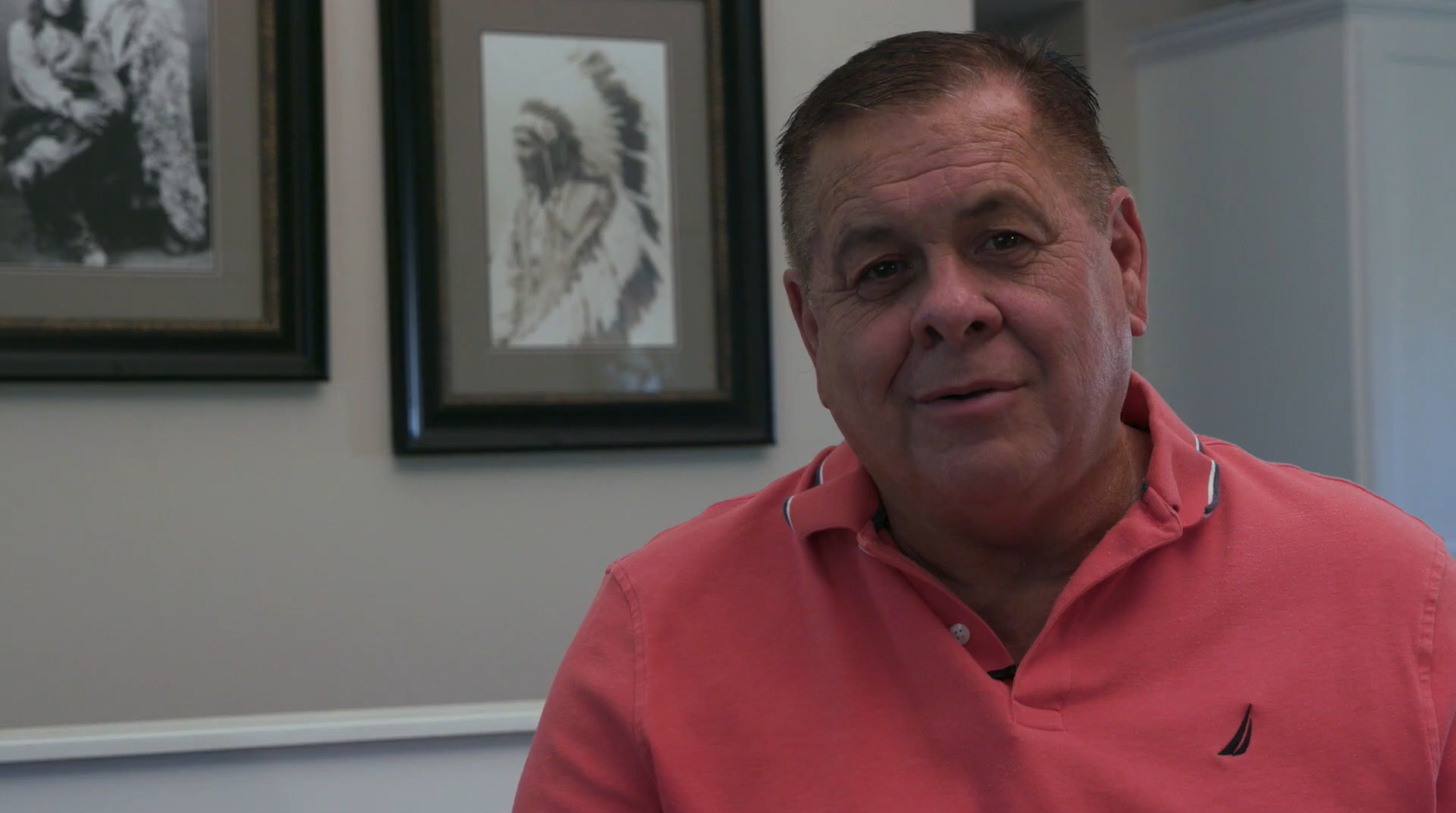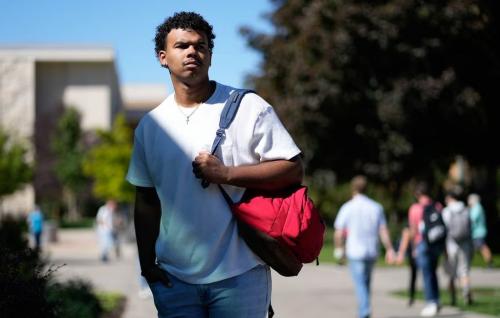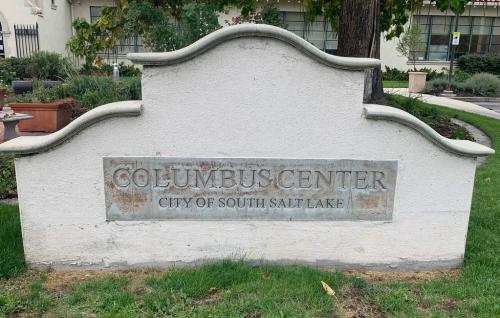Valene Peratrovich begins her Sunday morning show on Salt Lake City community radio station KRCL with an on-air land acknowledgement.
“We honor the original ancestors of this land and also offer respect to our other tribal member communities, and we acknowledge the history to cultivate respect for and advocate with our Indigenous communities still connected to this land,” says Peratrovich, who is known to listeners as “Valene MC.”
Valene Peratrovich begins her Sunday morning show on Salt Lake City community radio station KRCL with an on-air land acknowledgement.
“We honor the original ancestors of this land and also offer respect to our other tribal member communities, and we acknowledge the history to cultivate respect for and advocate with our Indigenous communities still connected to this land,” says Peratrovich, who is known to listeners as “Valene MC.”
Originally from Alaska, Peratrovich’s Indigenous ancestry comes from three separate tribes. She has lived all over the West Coast of the United States and now holds many titles, including radio host, KRCL staff production assistant, Native outreach coordinator and Salt Lake Community College student – all on top of being a mother of two.
Ask her how she’s done it all, and she likely will point to her Indigenous ancestry and genuine love of music.
Healing family trauma
Growing up in Anchorage, Peratrovich was heavily influenced by her family’s Native history.
Her grandparents were Native boarding school students who experienced abuse at the hands of the teachers, nuns and missionaries who ran the schools. The forced removal of Native children from their homes in the late 1800s and early 1900s in Alaska started a cycle of generational trauma that trickled down Peratrovich’s family tree.
In Peratrovich’s eyes, it ends with her.
Peratrovich was originally on a pre-medicine track during her undergraduate studies at Oregon State University. She switched to family sciences, she said, in order to learn more about herself and break the cycle of abuse she personally experienced.
“It sounds funny, but almost in an academic sense, I was learning how to be a parent,” Peratrovich said. “Part of breaking that cycle was healing myself, which is partially why college took [16 years] for me.”
As Peratrovich likes to say, she took the “scenic route through college.” While working in a lab as part of her bachelor’s at Oregon State, she and those around her were reminded of her gift of gab, which she remembers being chastised for as far back as elementary school.
“I’ve always loved to talk to people and ask questions,” Peratrovich said. “I found that even when I worked in the lab, I’d get my work done, but I loved to talk and socialize, … so I knew that [the lab work] wasn’t something I wanted to do forever.”
Peratrovich left the lab behind in 2010, around the same time her husband left the military. Four years later, the couple had a major life change — their first child — and decided to move to Salt Lake City.
‘180-degree’ change
Once in Salt Lake City, Peratrovich continued to work on her bachelor’s degree online, finishing it remotely in 2016. However, she said, she wasn’t happy with the odd jobs she was working, and yearned to find a new direction.
In 2021, Peratrovich enrolled at SLCC as a radio and TV production major, and almost immediately, she found the college’s classes to be a better fit.
“I went to school at a big university in huge lecture rooms,” Peratrovich said. “At SLCC, people are there because they actually do want to teach, not just because they’re being funded by research.”
In her first semester at SLCC, Peratrovich wrote a Native-focused article about the use of Indigenous mascots in sports that, through the nonprofit Amplify Utah, was published in The Salt Lake Tribune. The story’s subject matter grabbed the attention of Lara Jones, executive producer of “RadioACTive,” KRCL’s weekday activism show.
“When I began to work with [Valene],” said Jones, “It became clear — she can do what I do. Why not pass the microphone and see what she wants to do?”
Jones invited Peratrovich to host a “RadioACTive” Thanksgiving Special, which became “Exploring the Truths of Thanksgiving.” It aired on Thanksgiving Day 2021. Alongside Peratrovich, a distinguished panel of Indigenous leaders and community members discussed Native views of the popular American holiday.
Jones called it “a perfect distillation of what KRCL wants to do. … [We want to] empower storytellers. Especially those who don’t otherwise have access to the microphone, but are ready to step up to the microphone and knock it out of the park.”
Peratrovich’s first effort as a radio talk-show host earned her recognition. The Thanksgiving Special won first place in the public affairs/talk show category at the Utah Society of Professional Journalists’s 2022 contest.
“I finally got a chance to talk about Natives the way I want to talk about Natives,” Peratrovich said. “It was sharing what Thanksgiving means, or non-Thanksgiving, and Indigenizing and telling truths about what Thanksgiving is from different perspectives of people from different Native nations.”
A continuing media journey
Peratrovich’s Thanksgiving show solidified her switch from family sciences to media storytelling.
Now, as production assistant for “RadioACTive” and co-host of “Living the Circle of Life,” Peratrovich said she strives to entertain and inform – and tops it with her passion for music.
By focusing most of her show on contemporary Native artists like Ya Tseen, Peratrovich said she hopes to break the cycle of Native art being pigeon-holed as something from the past, or that is only traditional.
Carl Moore, a Utah-based advocate for Native issues and co-founder of both Pandos and SLC Air Protectors, said he thinks there needs to be a major shift in the way Native people are recognized today.
“We don’t want to be seen as this ‘historical’ Native American that gets romanticized and fetishized. It locks us into a box, into the past, and it makes us only valid as Indigenous people if we present ourselves in that past,” Moore explained. “It does damage to us, so it’s important [to recognize] that Indigenous people do change and develop.”
People should not forget the past, Moore said, but balance it with an openness of the present. “Our kids should have that ability to do things that speak to them, [whether contemporary or traditional],” he said.
Peratrovich curates her lineup of music in this way, made with the wisdom of ages past, mixed with the common vitality of modern artists.
“Music is how I tell people I love them,” Peratrovich said, smiling.
In only one year, Peratrovich received her associate degree in radio and TV production from SLCC. While in the program, she realized that she also loves being behind the camera, so she’s now pursuing another associate degree in film production.
Looking forward, “Valene MC” said she hopes to keep expressing her diverse history and shed light on contemporary Native culture through media involvement. Public, independent radio is the perfect platform to do so, she said.
“I’m always looking for folks to pass the microphone to,” said Jones. “But [I’m also looking] to say: there’s the next person. The next generation. Valene is eager to tell stories in a variety of formats and I can’t wait to see what she does next.”
“I want to create this vision [of Native culture], where it’s just so normal,” Peratrovich said.
Catch “Valene MC” as she hosts “Living the Circle of Life,” every other Sunday, 7-10 a.m., on KRCL-90.9 FM, or listen live at KRCL.org.
Kyle Forbush wrote this story as a journalism student at Salt Lake Community College. It is published as part of a collaborative including nonprofits Amplify Utah and The Salt Lake Tribune.
###
NOTE TO MEDIA PARTNERS PUBLISHING WORK
We also request organizations include the following text either at the beginning or end of the story text :This story is jointly published by nonprofits Amplify Utah and [Your Media Organization's Name] to elevate diverse perspectives in local media through emerging journalism. Kyle Forbush wrote this story as a journalism student at Salt Lake Community College. For more stories from Amplify Utah, visit amplifyutah.org/use-our-work.







